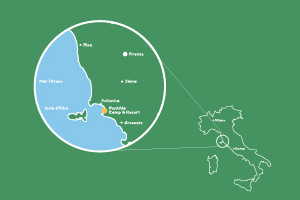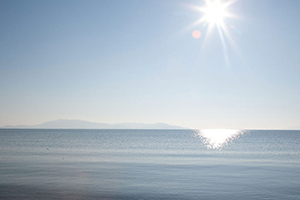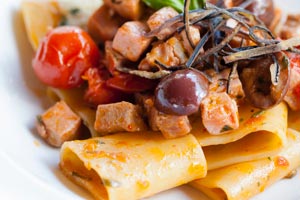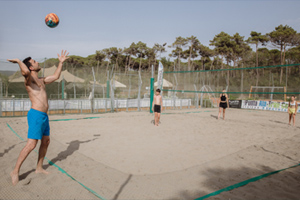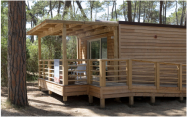Scansano: history, what to see and how to get there

Scansano, which has always been recognised as a holiday destination thanks to its enchanting environment and favourable climate, functioned as a summer retreat during the rule of Leopold II. This allowed the officials of the Commune of Grosseto, together with their families, to avoid the risks of malaria.
Between the late Middle Ages and 1633, Scansano oscillated between the influence of Siena, the Aldobrandeschi, the county of Santa Fiora and the Medici. The locality did not rely exclusively on the resources of the agricultural sector, but from the 18th century onwards played an essential role in the mining industry. Places of great tourist interest for their beauty include the Castle of Montorgiali, the Castle of Montepò, the Church of San Giovanni Battista, the sanctuary commonly known as the 'Madonna della Botte', the Church of San Domenico located in Murci, the Oratory of San Giorgio in Montorgiali, the Convent of Petreto and the archaeological site of Ghiaccio Forte.
Scansano
Scansano has always been appreciated for its beneficial climate and its appeal as a holiday resort, so much so that, during the reign of Leopold II, the administrative offices of the Municipality of Grosseto moved here during the summer for the so-called 'estatura', allowing employees and their families to avoid the dangers of malaria. From Scansano, one can enjoy splendid views ranging from the sea coast to Mount Amiata.
The History of Scansano
During the Middle Ages, its territory was divided between the influence of Siena and that of the Aldobrandeschi family. In the 14th century, Scansano became part of the county of Santa Fiora, which passed to the Sforza family in 1439 until 1633, when it became part of the Medici Grand Duchy. Scansano, in addition to its agricultural resources among which the grapevine stands out, from the 18th century onwards played an important role in the mining industry, with mercury, antimony, sulphur and lignite mines active until recent times.
The church of St John the Baptist, dating back to medieval times and transformed into a collegiate church in 1630, was renovated and magnificently decorated with delicate stucco ornaments in the first half of the 18th century. The sanctuary of the Madonna delle Grazie, better known as the 'Madonna della Botte', was built in the early 17th century as an oratory to guard a Marian image that had won the heart of the Moorish community present in Scansano since the second half of the 16th century. Indeed, the 'africhielli', born to Maremma mothers and Turkish fathers following the raids that had devastated the areas of Talamone, Giglio Island and Cala di Forno between 1535 and 1543, were very present on the coast.
These people, abandoned by their mothers at an early age and organised into small cohesive communities, when the Maremma fortresses came under Spanish rule in 1559, fled to avoid being captured and sold as slaves, as required by the provisions of Philip II. A considerable number of these refugees, who worked as labourers in the vineyards of Scansano, found asylum here and were warmly welcomed by the local inhabitants, so much so that a painting of the Madonna del Soccorso, later called 'della Botte' or 'degli Africhielli', commissioned by one of the local confraternities, was donated to them.
According to the legend of the foundation of the sanctuary, some of these winegrowers, intent on cleaning barrels just outside the village, discovered the image in one of them, an event that, immediately surrounded by a miraculous aura, began to attract devotees and pilgrims. The Marian image was honourably housed in the Church of Our Lady of Graces thanks to the efforts of the devotees belonging to the confraternity of St. Anthony Abbot, known as 'Le Scalzine', who, in the first half of the 17th century, undertook to collect sufficient offerings and donations to build the church and provide it with its own rector. The image became such an object of great popular devotion that the building that housed it was renovated in 1830 and then enlarged in 1862-1867 by engineer Luigi Vannucci, also following a flood that had seriously damaged it.
In Murci, the church of San Domenico was erected in the mid 19th century. In Montorgiali, an 18th-century oratory dedicated to Saint George is still the setting for a special folkloric ceremony in which the battle of Saint George with the dragon is re-enacted, a symbolic representation of the malaria-infested Maremma lands.
What to see in Scansano
The Convent of Petreto
The Convent of Petreto, once the Castle of Petreto, first appeared in scripture in 1274, with the Counts Aldobrandeschi divided between two branches and dominated by the Counts of Santa Fiora. It became an oratory of the Franciscans and was ceded to the Republic of Siena in 1339. Saint Bernardino of Siena is said to have stayed here in 1422. In 1507, the Convent and Church of San Pietro al Petreto were founded by Count Guido Sforza. Today, the convent part is privately owned, while the Church is cared for by the parish of Scansano.
The Ghiaccio Forte Archaeological Area
The Ghiaccio Forte archaeological zone, an Etruscan settlement, was discovered in 1973, thanks to excavations that revealed large portions of the walls and structures of the urbanisation. Subsequent excavations, albeit limited, the last of which in 1981, demonstrated the destruction of the village by fire, the discovery of a votive stipe with bronze and terracotta artefacts, a smelting oven, three gates to the city and some residential rooms.
The Castle of Montorgiali
The Castle of Montorgiali, with its imposing appearance, appears for the first time in a document of 1188 signed by Clement III, addressed to the Bishop of Grosseto. Situated on a hill, it still has fascinating arched windows and corbels of now-lost plumbing. The Castle and the Borgo have followed the historical events resulting from the hostilities between the Aldobrandeschi of the Santa Fiora branch and the Republic of Siena. Montorgiali was sold to the Republic of Siena in 1378. Today, the Castle of Montorgiali, redeveloped as a historical residential property, is privately owned.
Montepò Castle
Montepò Castle, built by the Sienese nobleman Roberto Sergardi in the 14th century, is located about 7 km from Scansano. Montepò is a fortified farmhouse, or walled castle, that has undergone extensions throughout its history, giving it its current beautiful rectangular structure with four towers, one at each corner. The entrance to the large inner courtyard is located on the south-west side and was protected by a chimney-shaped machicolation and two crossbows positioned in the two towers to the side of the entrance. The Montepò Castle, recently completely restored, is privately owned.
Map of Scansano
How to get to Scansano
By car:
From the north, follow the A1 Autostrada del Sole motorway and exit at Firenze Certosa. Enter the Firenze - Siena motorway, proceed on the Siena Ovest ring road towards Grosseto, continue on the SS 1 Aurelia, exit at Grosseto Est, then follow signs for Scansano.
From the south, in Rome, take the A12 motorway, exit at Civitavecchia, proceed on the SS 1 Aurelia towards Grosseto, after passing Orbetello, turn off for Scansano.
Train/Bus:
Trains on the Genoa - Pisa - Rome line pass through Grosseto.
Information on train times can be found on the Ferrovie dello Stato website www.ferroviedellostato.it/.
From Grosseto, you continue by bus with the Rama line. By bus, the Autolinee R.A.M.A. (Rete Automobilistica Maremmana Amiatina) operates from Piazza Marconi (FS station). For further details, please consult the website(www.ramamobilita.it/)
By Plane
You can reach the area via the following airports: Rome Fiumicino Airport (about 158 km away) Florence Airport (about 165 km away) Pisa Airport (about 173 km away)
Where is Scansano located?
Scansano is located in the province of Grosseto, in a hilly area between the Ombrone and Albegna rivers. Scansano is known for the production of Morellino di Scansano wine and for its rich historical and cultural heritage.











